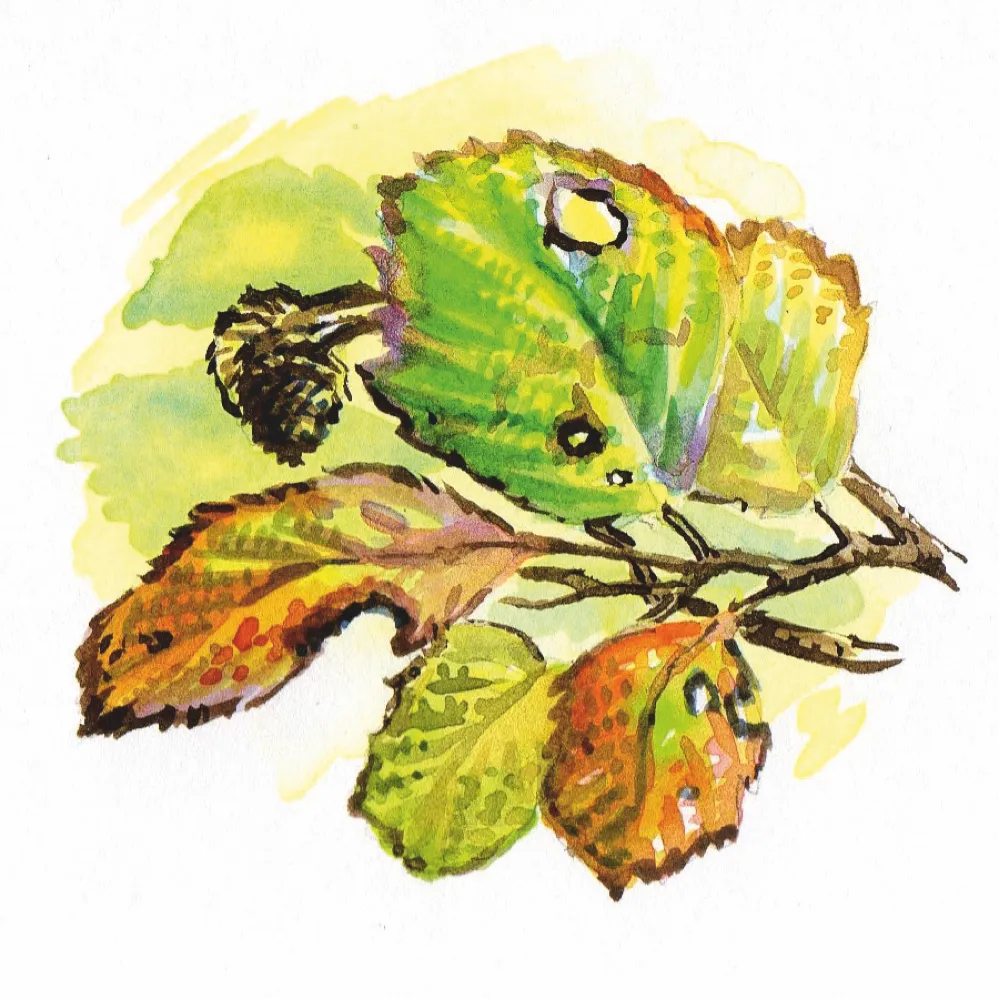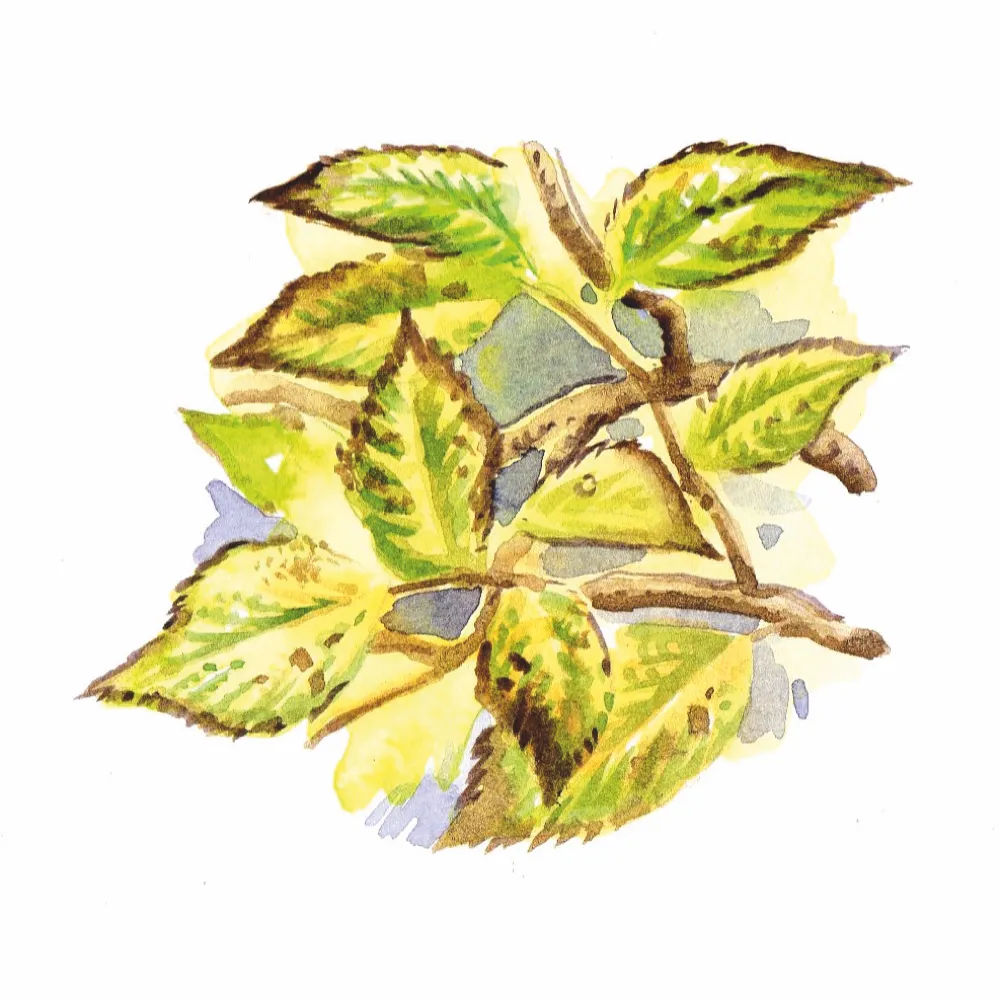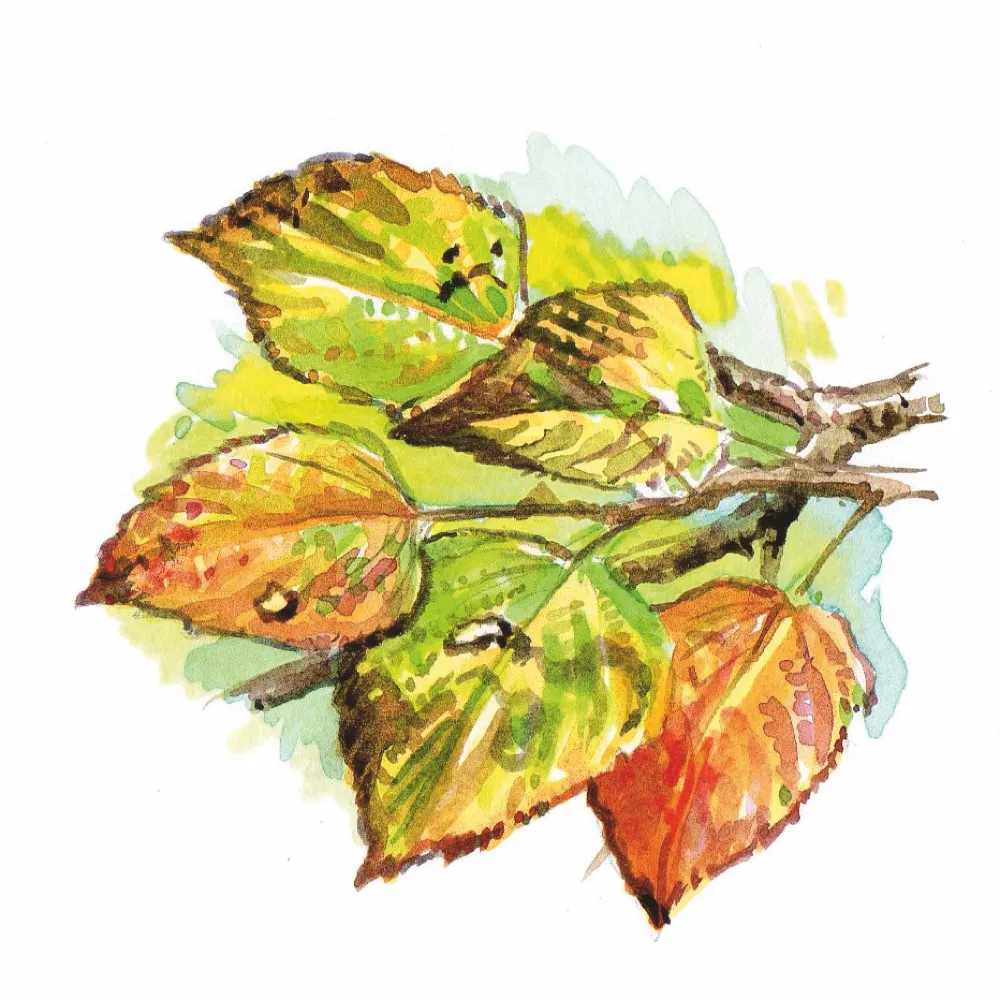The apparent tinting of leaves in autumn is caused by the breakdown of green chlorophyll, which masks underlying red and yellow pigments in summer.
The timing of colour changes varies between species, location and the vagaries of the weather, so trips to enjoy the splendour require flexible planning and a little serendipity.
Every leaf tells a story. For example, sycamore leaves often bear the black blotches of tar spot fungus, while other species may be studded with galls caused by specialist arthropods such as the silk button gall wasp (oak) and the red pustule gall mite (field maple). Finally, if your spirits fall with the foliage, take cheer in next year’s catkins, bursting forth on leafless hazels.
Learn more about identifying plants in autumn and winter:
All illustrations by Dan Cole/The Art Agency.
European alder (Alnus glutinosa)

Also known as black alder, common alder, or in the UK often just as alder. The leaves are in an inverted heart-shape; which are often green after others have fallen. They don't have a showy colour, just gradual blackening as the season progresses.
European ash (Fraxinus excelsior)

Also known as common ash or sometimes just as ash. The leaflets fade to yellow and drop in late October. Blackening of the leaves, or early leaf fall, are symptoms of ash dieback.
European beech (Fagus sylvatica)

Also known as common beech or just beech. The leaves are pointed ovals, which turn fox-red before dropping gradually from October. Once on the ground, they rot slowly, forming a thick carpet.
English oak (Quercus robur)

Also known as common or pendunculate oak, the leaves have a lobed shape with a short stalk. They turn yellow-brown from October, and drop from November to December. In autumn, the green acorns turn brown before dropping to the ground. It's possible to collect and germinate acorns at home.
English elm (Ulmus minor)

The rounded, toothed leaves turn deep yellow in autumn. In both English and Wych elms, early yellowing may be Dutch elm disease.
Wych elm (Ulmus glabra)

These large, oval leaves have toothy ‘corners’ and tapering tips. They are yellow in autumn, and drop in November, after which they decay quickly.
Field maple (Acer campestre)

The five-lobed leaves glow red and gold from October and drop November, with colours that are brighter than sycamore.
Hawthorn (Crataegus monogyna)

These small, deeply lobed and distinctive leaves of hawthorn, sometimes known as the May-tree due to its flowering period, may show green, yellow, orange and red all on the same tree. These leaves drop from November. In autumn, the berries (known as haws) are bright red and can be used to make hawthorn vinegar or hawthorn gin (recipe on the BBC Countryfile Magazine website).
Common hazel (Corylus avellana)

The shield-shaped leaves are rough to touch, turning yellow in October and dropping by December. They decay rapidly over winter.
The nuts, known as cobs, are ripe from September and October, and if you can get to them before the squirrels and other small mammals (or alternatively, pick them whilst they are still green and leave them to ripen in a warm, dark and dry location), they can be used to make hazelnut butter.
European hornbeam (Carpinus betulus)

Also known as common hornbeam, or just hornbeam. The leaves are oval, pointed, and double-toothed. They change gradually from yellow to orange and brown, and drop relatively late.
Common lime (Tilia x europaea)

A hybrid between small-leaved (T. cordata) and large-leaved (T. platyphyllos) lime. The heart-shaped leaves fade to dull yellow and brown. Look for tall, pointed growths caused by nail gall mite.
Sycamore (Acer pseudoplatanus)

The broad leaves turn pale yellow to gold, and then drop in November. They commonly have a number of black lesions, which are caused by tar spot fungus (Rhytisma acerinum).
Main image: Autumn oak leaves. © Getty




